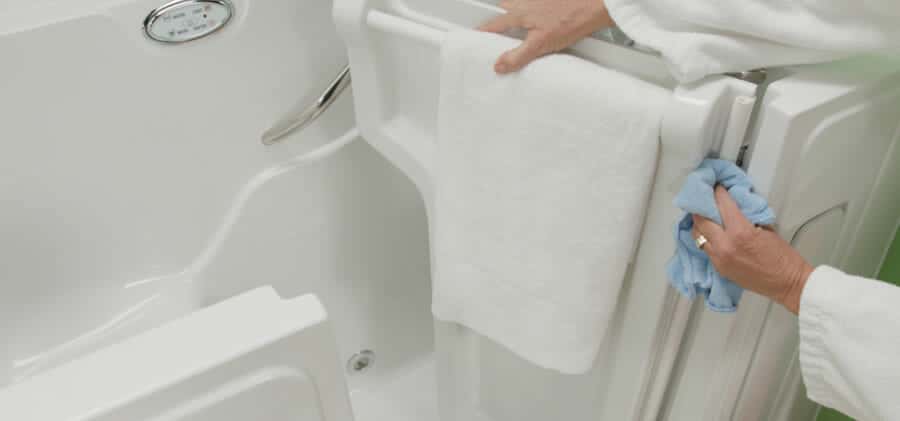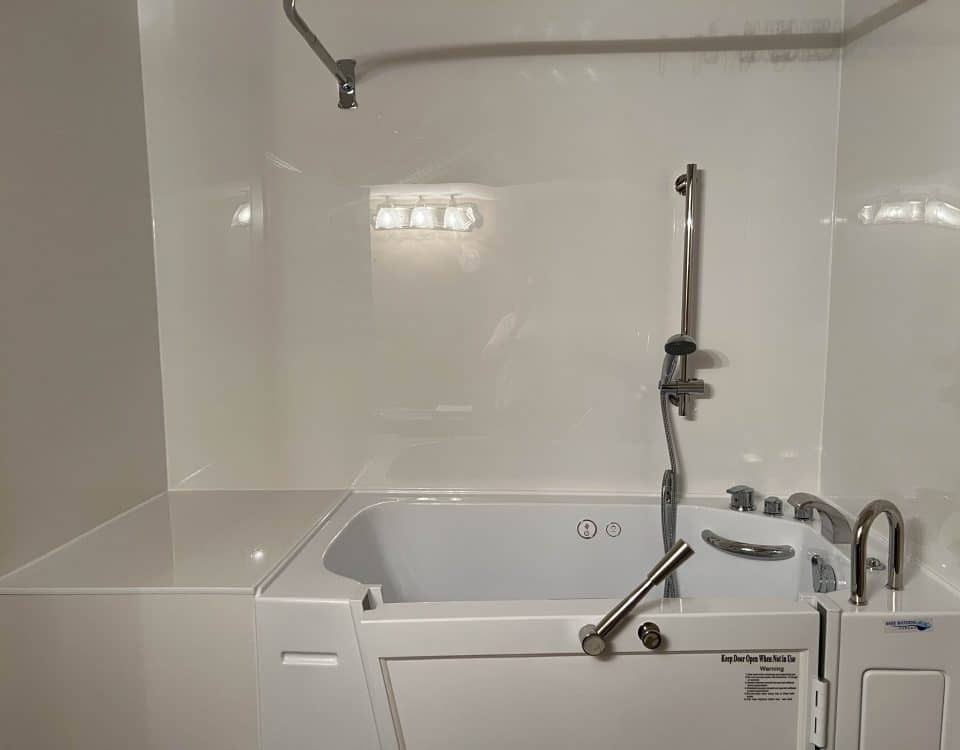
How to Make a Small Bathroom with a Walk-In Tub Look Bigger
October 16, 2018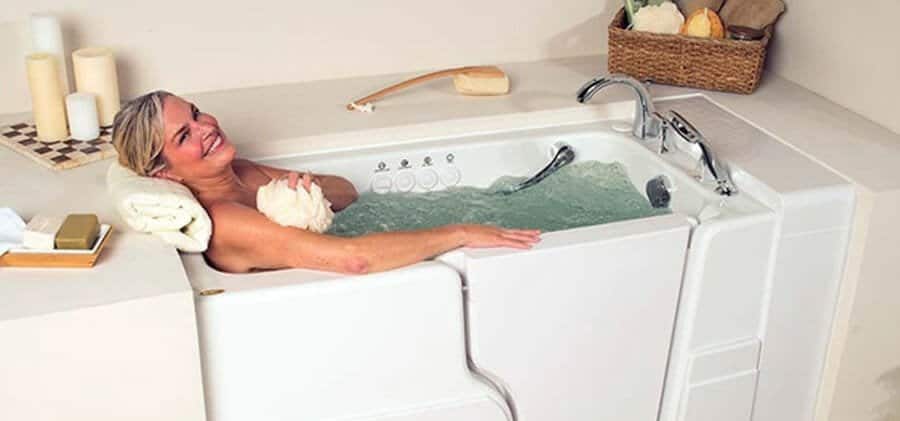
5 Important Things to Know When Taking a Cold Shower in the Walk-in Tub
January 8, 2019While traditional bathtubs common, new bathtubs are the walk-in type, with a door. It’s especially recommended for the elderly or those who want to relax while bathing.
Walk-in tubs give us the most soothing bathroom experience.
Just imagine you sitting with your back laid back, warm water flowing easily through your body, that feeling of relief, well, that is the bathtub experience.
Assuming, you have just acquired a walk-in bathtub, all new and installed in your favorite bathroom spot, you need to know some maintenance tips.
With a good maintenance plan in place, you’re going to enjoy the comfort that a walk-in tub brings.
Maintaining a walk-in tub boils down to proper cleaning. But even before you start your cleaning, there are a few things you need to keep in mind. Not all walk-in tubs are cleaned in the same old-fashioned manner.
Cleaning a walk-in bathtub requires you to put into consideration these three factors:
i). Water:
Hard water or soft water? You need to know which type of water you’re using. Then you’ll know what types of stains you’re dealing with. Hard water tends to build a lot of scales on the tub walls while soft water is safe for bathtub use.
With hard water, this means that you’ll require rigorous maintenance if you want to benefit more from your walk-in tub.
ii). How often do you use your walk-in tub?
For most people, an early morning bath will comprise a shower while standing. Then comes the evening, sweat dripping, limbs tired and head revolving. At this time, a walk-in tub is the best.
However, different people have different preferences when it comes to freshening up.
What am I saying? Depending on how frequent you use your tub, cleaning activities should be proportional to that number of times.
iii). Type of Material:
Walk-in bathtubs are mostly made of fiberglass or acrylic. While the latter is easy to clean and lasts longer, a fiberglass bathtub requires high maintenance.
This is due to the fact that, they can get discolored and pale. If you don’t want to lose interest in your walk-in tub, make sure you know which material they’re made of and then enforce the necessary cleaning activities.
Having broken down the factors to consider when cleaning your walk-in tub, we will now look at 7 tips for maintaining a walk-in bathtub.
1. Clean the surfaces
The surface of a walk in walk-in tub is the first thing you look at to determine how clean your tub is. Any stains or indications of it can be sometimes very irritating. So, how do you avoid stains?
Or rather, how do you clean your walk-in tub surface?
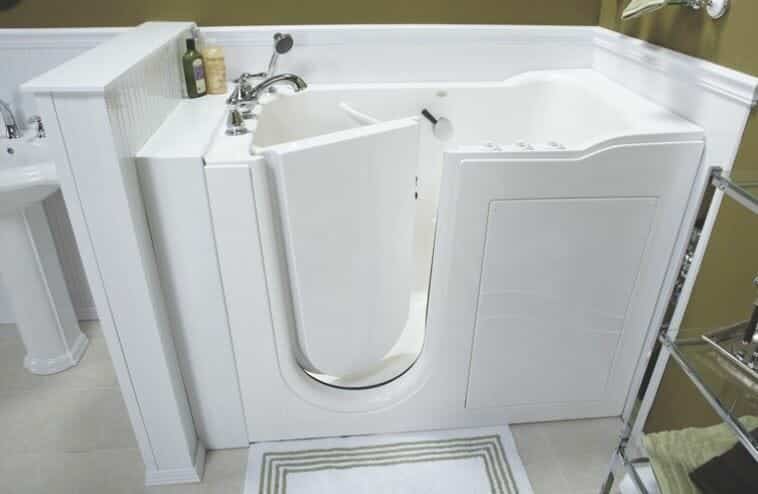
First, you will need a disinfectant and a soft cloth. But before you advance your cleaning, know exactly which type of disinfectant you’re using. A non-abrasive disinfectant is recommended.
It makes sure that the surface of your walk-in tub remains as soft as possible. Also important is the reaction of the disinfectant to your skin. Pick a disinfectant that’s friendly to your skin.
While cleaning, wipe the surface gently using the soft washcloth, not forgetting the handrails. Then rinse the surface with clean water and let your tub dry. A clean surface is the first step to a clean tub.
2. Faucets and Showerheads.
While surfaces may give you the impression of a clean walk-in tub, other parts need cleaning too. We’re targeting a full clean up, no parts should be left out.
Most people tend to forget the faucets and the shower heads. Once in a while in your bath, you’ll have to touch the faucet, and most certainly, the touch always has some hint of soap in it.
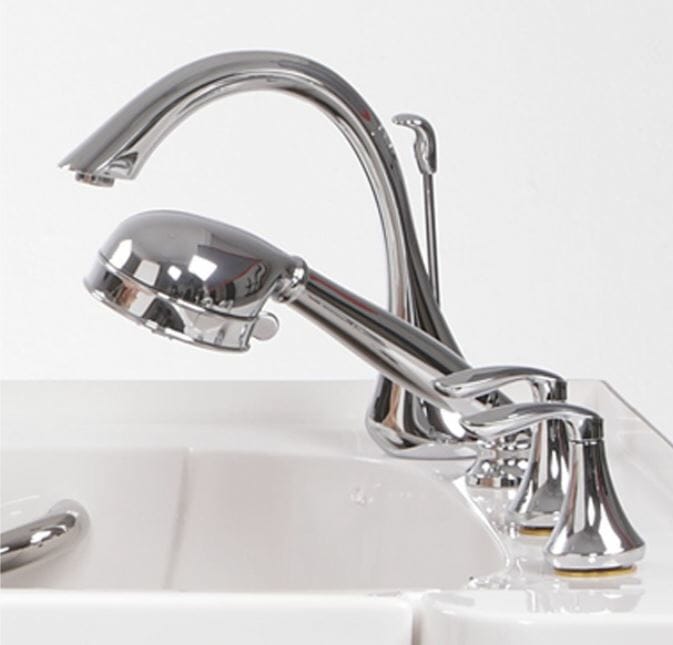
If you fail to clean the faucet, the soap will dry up on the faucet and start to create scales in the faucet. This might be the missing piece between you and a clean walk-in tub.
Regardless of how high your shower head is raised, it needs cleaning too. A gentle rub with a washcloth and some disinfectant would do the job. Both for the shower head and the faucet.
3. Clean walk-in tub environment
We all have different bathing habits. While some people may be the calm type, some people get quite sparked up and spill water and foam all over.
With habits come responsibilities. If you’re the sparked-up type, you need to ensure cleanliness around your tub.

Even for the calm ones, cleanliness around the tub is not a debate. If you want to avoid spillage, shower curtains are recommended.
But then again, some people don’t want to get all tucked up behind some creepy curtain while relaxing. They want space, a lot of it. Clean the bathroom floor and the sides of the walk-in tub, before or after your bath, mostly after.
A clean tub environment will give you a much peaceful and safe environment for your relation. For safety, we don’t want you slipping and breaking a limb or two after coming from your bath. A clean tub environment assures this.
4. Air Circulation
Ever walked into a stuffed-up bathroom? Windows closed and a grotesque smell intrudes your nose? Well, you have just walked into a poorly ventilated bathroom.
If you’re going to enjoy your walk-in tub experience, you need to ensure there’s some good air circulation around the whole bathroom environment. You surely want to draw in fresh air, not some strange smell that disrupts your comfort.
How do you ensure proper air circulation? It’s recommended that you leave your bathroom window open for at least an hour a day. Or even more if possible.

A well-ventilated bathroom is another key to maintaining a healthy walk-in tub. In addition, it’ll also ensure that your tub doesn’t grow pale from the air enclosed around the tub environment.
I also recommend that you spray air fresheners around the walk-in tub before and after use.
5. Check for any leakages
A high-quality walk-in tub should not leak. However, with time, this may be inevitable. If your walk-in tub has been there for a long time, it’s probably time to start checking for leakages, if you haven’t done so.
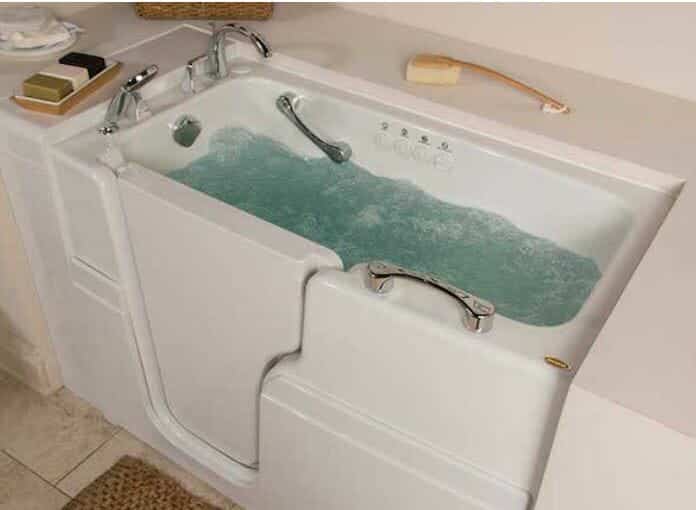
Check regularly for leakages to avoid flooding your bathroom floor.
Need I tell you that a flooded bathroom floor is a disaster in waiting. Check regularly for leakages.
6. Develop a cleaning schedule
For most people, the daily cleaning of a walk-in tub can prove to be a headache. Who wants to get all messed up a long relaxing bath? Just because you have to clean the tub.
However, we all know the essence of a clean tub. If you cannot manage daily cleaning, then you should set a schedule for cleaning, this way, you’ll still be implementing maintenance practices on your walk-in tub.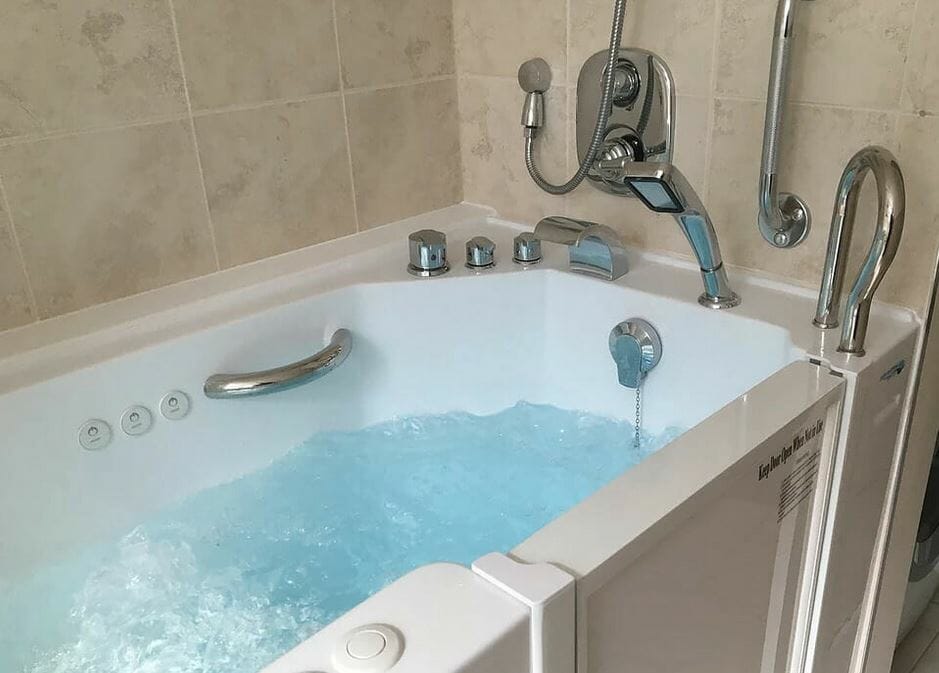
A weekly, bi-monthly, or monthly schedule is recommended. However, the longer the interval between the schedule, the more intensive cleaning you require.
Furthermore, a cleaning schedule should be comprehensive. That is, it should cover all cleaning and maintenance practices to be carried out.
7. Make sure of the service warranty
Tub vendors offer lucrative after sales services like transport and installation. Many times, walk-in tub buyers are mostly fascinated by the tub experience and after sales services, that they forget to inquire of warranties.

It actually happens with almost all buyers.
While buying your walk-in tub, ensure that the vendor has some service warranty on the tub, this will lift off some cleaning burden from you. Most vendors offer 5 to 10 service warranties on a walk-in tub.
Take advantage of this warranty, they will probably give you proper maintenance than you can perform yourself.
Conclusion
Getting a walk-in tub is one thing, keeping it in perfect condition is another. For a long-lasting tub, the above-mentioned maintenance practices come in handy.
Keep in mind the type of disinfectants to use on the different types of materials used to make walk-in tubs. Either acrylic or fiberglass, the disinfectant or antiseptic should match the material.

